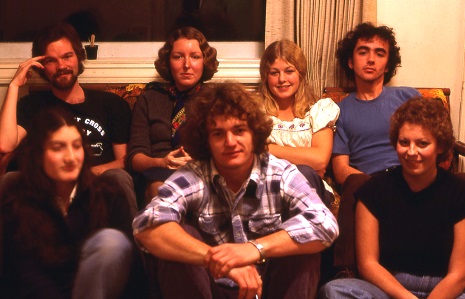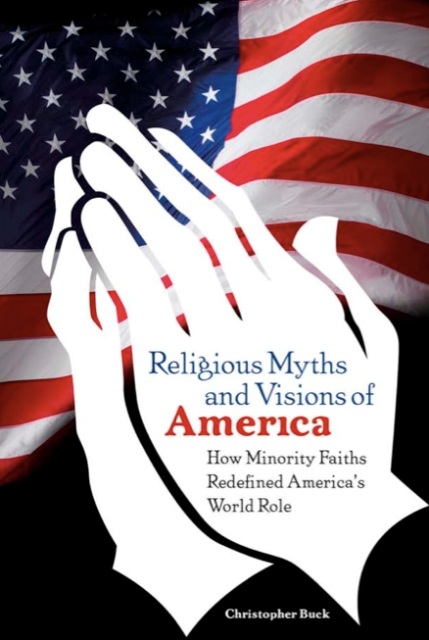The views expressed in our content reflect individual perspectives and do not represent the authoritative views of the Baha'i Faith.
The first attribute of perfection is learning and the cultural attainments of the mind, and this eminent station is achieved when the individual combines in himself a thorough knowledge of those complex and transcendental realities pertaining to God, of the fundamental truths of Qur’anic political and religious law, of the contents of the sacred Scriptures of other faiths … He should in addition be informed as to the laws and principles, the customs, conditions and manners, and the material and moral virtues characterizing the statecraft of other nations, and should be well versed in all the useful branches of learning of the day, and study the historical records of bygone governments and peoples. — Abdu’l-Baha, The Secret of Divine Civilization, p. 35.
Here’s how this quote changed my life:
Shortly after becoming a Baha’i on December 15, 1972 (at the age of 22), I began to immerse myself in the study of the scriptures of world religions (“of the contents of the sacred Scriptures of other faiths”). This was not “normal” for a young man. Nevertheless, I embarked on my lifelong quest to try to attain (to a very limited degree) this “first attribute of perfection.”
In small group meetings that Baha’is call “firesides” (where folks interested in finding out more about the Baha’i Faith would go to learn more), my two roommates jokingly referred to me as “Guru Buck” — because I would readily elucidate (and pontificate) on questions the “seekers” asked on any of the teachings of world religions, including those of the Baha’i Faith. Here is a photograph taken at one of those Baha’i firesides:

Baha’i Fireside Photo, 1975. Back left: Christopher Buck. Front center: Dale Marxen, one of my two roommates. Back right: Stephen Menard (my other roommate). Four Baha’is, three “seekers,” one of whom became a Baha’i soon after (Back, 2nd from right).
One of my roommates, Dale Marxen, later received his PhD in accounting from the University of Colorado at Boulder (1988) and is now a Baha’i pioneer, with his wife, Vajdieh, in Zagreb, Croatia. At our firesides, Dale would sing a song he wrote about this topic — “The Trials of the Spiritual Tourist” or “I’m On the Road Again”. Dale, strumming his guitar, would sing this song, with a catchy, upbeat melody, and a voice that I would describe as folksy, friendly and engaging:
~ Chorus ~
I’m on the road again, I’m on the road again —
And I can’t give up, it’s another dead end …
I’m on the road, I’m on the road, I’m on the road,
… again.
Well, I had a dream that I was a worm.
So I called to my guru.
And for $35, he confirmed
I was a worm back in ‘22.
~ Chorus ~
I saw so many posters tacked to the wall.
I saw faces large, I saw faces small.
I saw Lenin, Maharishi, Krishna, too —
With their faces of red, yellow, and blue.
~ Chorus ~
Well, I tried to talk to the people who say they’re on the One Way
But, after listening to them for a while, I’d say …
They’re going the wrong way
On the one way.
~ Chorus ~
Well, I finally found a road that I can really cruise upon,
And like any other freeway that I’ve known,
… the problem’s just getting on.
I’m on the road again, I’m on the road again,
And I can’t stop now, ‘cause I see no end,
I’m on the road, I’m on the road, I’m on the road again.
The years rolled by, but I never forgot Abdu’l-Baha’s teaching that the “first attribute of perfection is learning”. In fact, I eventually wrote a book, Zoroaster and The Mystery of the Great Reversal (about Baha’u’llah’s fulfillment of the messianic traditions of various world religions). It was never published, due to its “purple prose,” as an editor politely put it. But the act of writing the book led me down another path.
 It was not until I met my dear wife, Nahzy, that she encouraged me to put my knowledge of world religions to good use by pursuing graduate work. So I did — first by earning a Master’s at the University of Calgary and then a PhD at the University of Toronto in the academic “Study of Religion.” Then, for several years thereafter, I taught world religions at Millikin University, Quincy University and, to a limited extent, at Michigan State University, where, in the 2003–2004 academic year, I designed and taught a course called, “Religious Myths of America.”
It was not until I met my dear wife, Nahzy, that she encouraged me to put my knowledge of world religions to good use by pursuing graduate work. So I did — first by earning a Master’s at the University of Calgary and then a PhD at the University of Toronto in the academic “Study of Religion.” Then, for several years thereafter, I taught world religions at Millikin University, Quincy University and, to a limited extent, at Michigan State University, where, in the 2003–2004 academic year, I designed and taught a course called, “Religious Myths of America.”
And this led me right back to the idea of a book on the subject.
Read the next article in the series: Narrowing Your Search – Part 2
©2013 by Christopher Buck.
You May Also Like
Comments

















I do have issues with the socioligist you quoted without rebuttal on the Buddhism chapter. His view is obviously biased as he superimposes the tenants of Hinayana/Theravada Buddhism on Mahayana Buddhism which is problematic as it doesn't take into account the existence of Mahayana Sutras that Mahayana Buddhists follow, not the Agmas/Nikayas. The Mahayna stance on Hinayana/Theravada and the Agamas/Nikayas are too complex to summarize here, much ...less to call it apostasy.